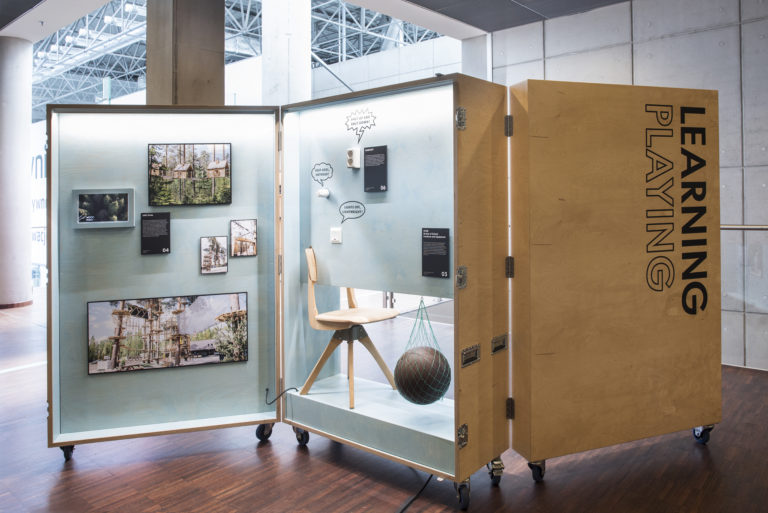EcoDesign Circle project wrap-up
A shift towards more sustainable production and consumption patterns is an opportunity also for other sectors to reduce their environmental footprint and to meet the growing demands of their customers. But which springboard to use in order to get more circular, reduce waste and to increase the product’s lifespan? The answer lies in changing the design strategies of companies.
Ecodesign – the springboard to circularity
“Good design is serving the people, the economy and the environment at the same time,” says Jutta Brinkschulte from the International Design Center Berlin (IDZ). Advising companies on designing better products and services is her bread and butter. This naturally includes ecological design for all stages of the product life cycle. But it was teaming up with experts on circularity in the Interreg projects EcoDesign Circle and EcoDesign Circle 4.0 that enabled the center to widen up its circular offer.

Children swap, borrow and upcycle their toys in a mobile exhibition that goes around Baltic Sea area thanks to the EcoDesign Circle project. Photo: Gdynia Design Days 2017 Bogna Kociumbas, Michal Szymonczyk
Towards new product-service systems
The interest in sustainable business models is high. It is relatively easy for start-ups and smaller companies to apply the new approaches. But what about bigger companies, often with open production lines, for whom it means a major transformation?
The challenge was accepted by a German furniture manufacturer, an Estonian manufacturer of watersports equipment, a Finnish real estate company and a Russian furniture manufacturer. All companies welcomed experts from design centers to create their roadmaps to more sustainable solutions and product-service models offering new services instead of new products. “We usually do not get that deep into the company’s work. The openness to host experts from other Baltic Sea region countries and to work together on the company’s circular approaches is what made it a particularly valuable experience,” says Jutta.
“The world got a bit bigger for me when I worked closely with the companies and see how things are done in other design centres in Finland or Estonia. That was the best part of this project. Now we will share this knowledge with our clients from several business sectors who are ready for a circular change,” she adds.
Circular work in progress
These experiences, together with the hands-on project toolkit: Ecodesign Learning Factory and Audit-Sprint tools serve now as an inspiration for other companies, design centers and agencies around the Baltic Sea region to help them proceed with circular transformation.
Reading along the lines of the latest circular economy action plan developed under the European Green Deal and proven by just two successful examples from the Baltic Sea region and Central Europe, it seems there is no way back from this path indeed.
Authors:
Dana Kascakova, Communication Manager at the Interreg CENTRAL EUROPE Programme.
Anna Galyga, Communication Officer at the Interreg Baltic Sea Region Programmme.
This article is part of a series on how transnational cooperation contributes to the EU Green Deal.
Article & image source: interreg.eu



